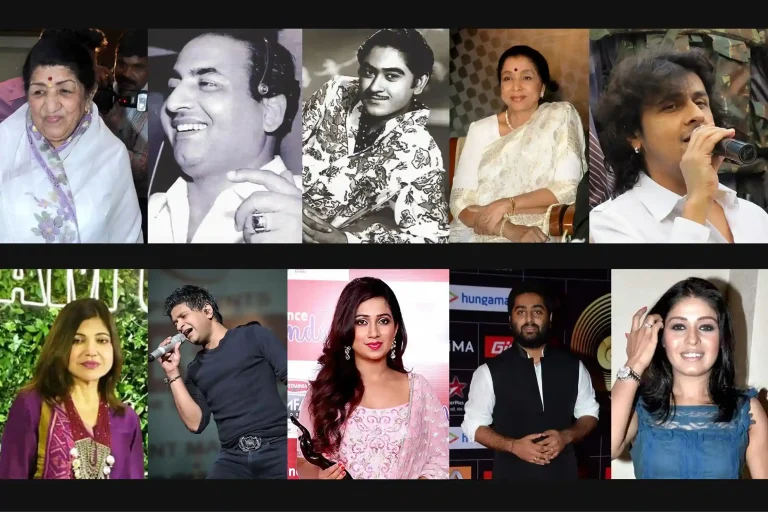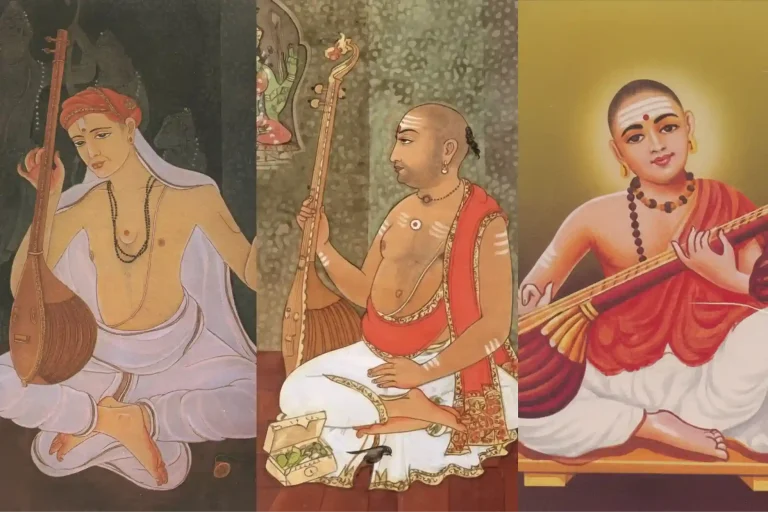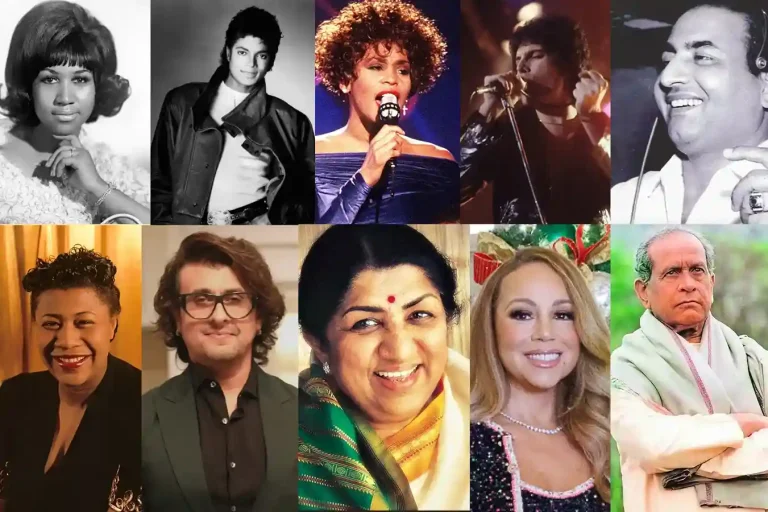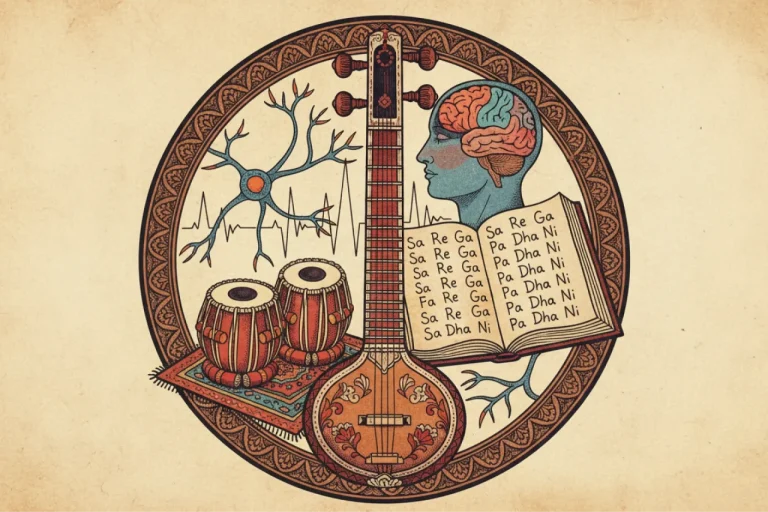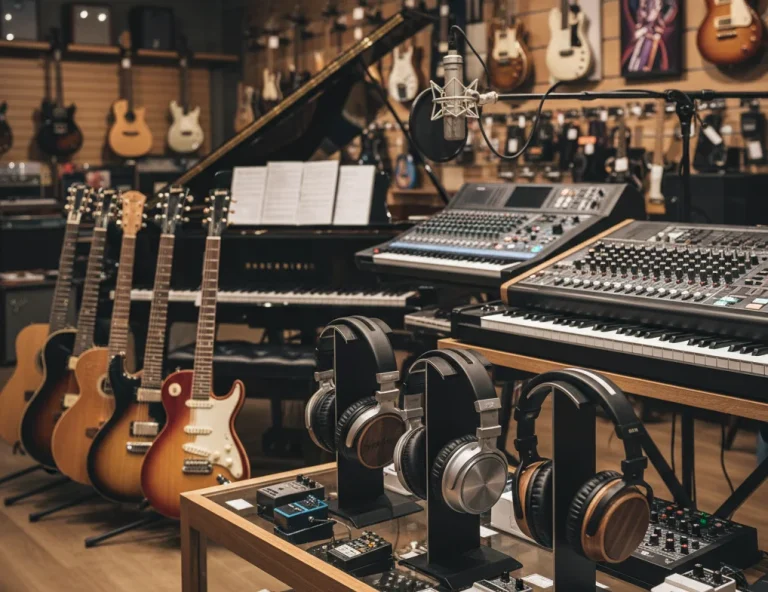All Topics
- Alchemizing Music Concepts for Students
- Artist Spotlight
- artium gift card
- Artium Maestros
- Artium News
- buying guide
- Carnatic Music
- Devotional Music
- Editorials by Ananth Vaidyanathan
- Film Music
- Guitar
- Hindustani Classical Music
- Indian Classical Music
- Indian Folk Music
- Insights
- Instruments
- Karaoke Singing
- Keyboard
- Kids Music
- maestros
- Music Education
- Music for Kids
- Music Industry
- Music Instruments
- Music Legends
- Music Theory
- Music Therapy
- Piano
- piano guide
- Success Stories
- Tamil Film Music
- Telugu Film Music
- Time Theory
- Tools
- Uncategorized
- Vocal Singing
- Vocals
- western classical music
- western music
- Western vocal music
Carnatic Music, Film Music, Hindustani Classical Music, Indian Classical Music
A Beginner’s Guide to Developing Raga Alaap
A Beginner’s Guide to Developing Raga Alaap
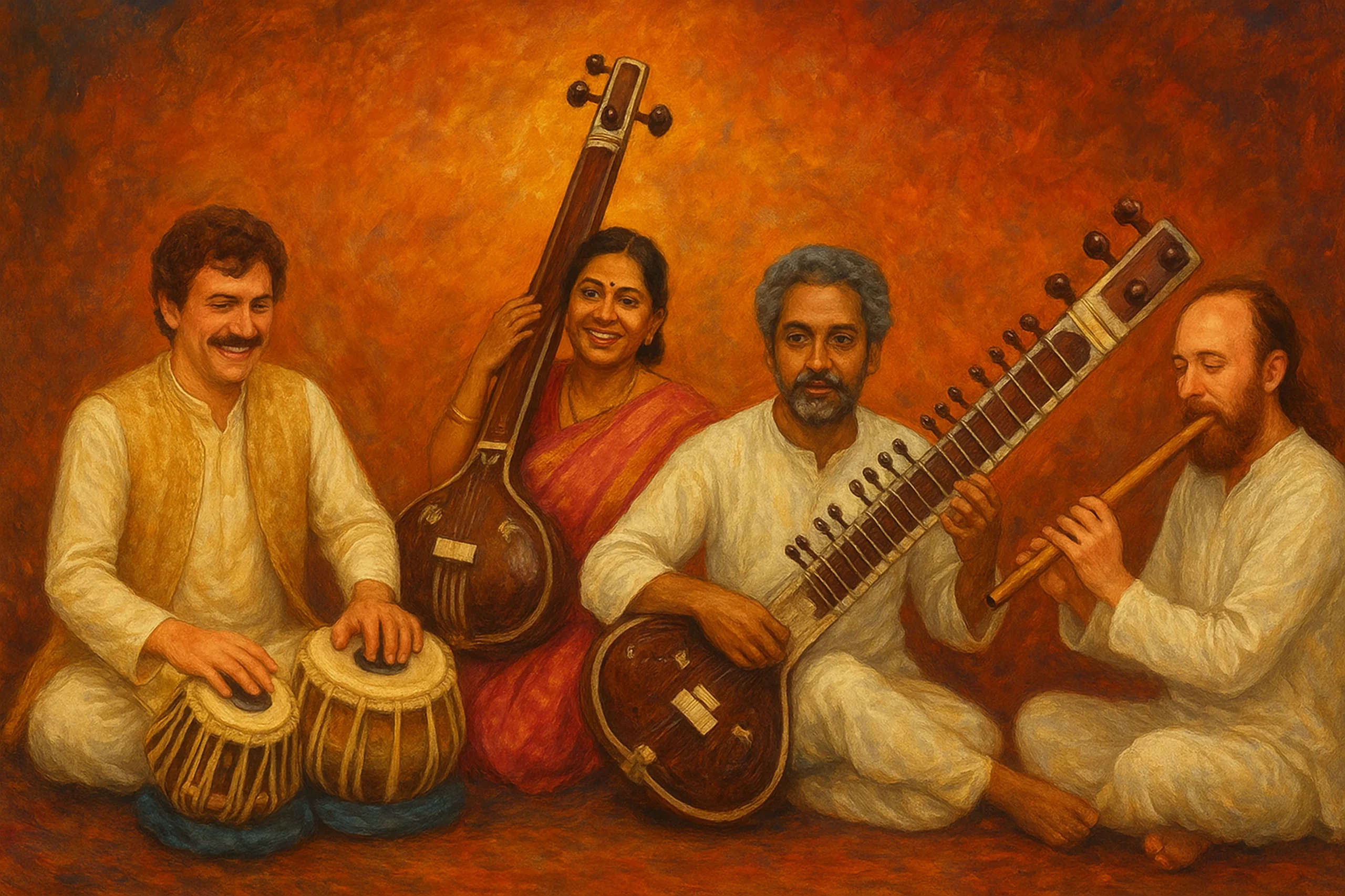
Table of Contents
Many times, beginners are confused about how to sing a raga Alaap. They don’t understand how to start an Alaap? How to decorate, or make it beautiful? Although they can understand the mood of the Raga and can also feel it, they are hesitant to form it into a structure on their own. Beginners can sing Alaap properly if they understand how to create the mood of a raga through the use of Swaras, and will be confident about presenting Alaap on stage.
This article is designed for beginners, enabling them to easily understand the fundamentals of Alaap. At first, to sing a Raga, a learner needs to know and learn all the aspects of a Raga while learning music.
They should know raga’s Alaap, Bandish, Bol banav, Vistar, Taan-Sargam, etc. Alaap helps identify the Raga and phrases that create the mood of the Raga. Therefore, to sing a Raga in music, it is necessary to know and learn its Rasa.
What is Alaap?
Alaap is the introductory part and the starting point of the raga . It is the most important and expressive component of Indian classical music, particularly in both Hindustani and Carnatic traditions. It expresses the raga’s character, mood, and swaras. Alaap is sung through ornamentation by decorating and arranging the phrase of notes with meed, Andolan, and Gamak, etc. Alaap is not just about singing the Swara, it is also about expressing how to sing the musical notes beautifully in an aesthetic way and each musical note is sung melodiously. It introduces the Raga.
Basic Tenets of Alaap
1) Raga Knowledge
To sing an Alaap, a learner needs to know the swaras of the raga. The application, arrangement, and use of swaras in all ragas are not the same, so if a learner has structural knowledge about a raga, then it is possible to build a proper foundation of Alaap. Raga is a melodic framework that expresses a specific mood and emotion. Two types of ragas are usually sung –
| a) Janak Raga or Parent Raga b) Janya Raga |
Usually, seven Swaras are sung in the parent raga, and many swaras are omitted in the Janya Raga. Therefore, the Alaap is performed by understanding the notes of the Raga, because its beautification begins with the Alaap of the Raga.
2) Thaat Knowledge
To categorize the ragas, Thaat was introduced by Pandit Vishnu Narayan Bhatkhande(1860-1936) in Hindustani classical music. This is the ascending order of the 7 musical notes. Thaat can’t be sung, those are specific Swara combinations. Although the concept of Thaat emerged much later than the creation of Raga, it can be said that it originated from the concept of the Parent Raga or Janal Raga. Therefore, before performing any Raga, the learner should know the thaat. They can easily locate the swaras of that Raga.
3) Conception of Aroha (आरोह) and Avaroha (अवरोह)
Aroha is the Ascending scale of Raga, and Avaroha is the Descending scale of Raga. The same note doesn’t need to be used in ascending and descending. Aroha represents the upward movement of notes, starting from the lower to higher octaves, while Avaroha represents the downward movement, from higher to lower octaves.
Examples of Aroha and Avaroha of some Ragas:
- Raga Bhairavi:
Aroha (ascending) is: Sa Re Ga Ma Pa Da Ni Sa’
Avaroha (descending) is: Sa’ Ni Da Pa Ma Ga Re Sa
Sa (Shadaj), Re (komal Rishabh), Ga (Komal Gandhar), Ma (Shuddha Madhyam), Pa (Pancham), Dha (Komal Dhaivat), and Ni (Komal Nishad). In this raga, the ascending and descending swaras are the same.
- Raga Durga:
Aroha (Ascending): Sa Re Ma Pa Dha Sa
Avaroha (Descending): Sa Dha Pa Ma Re Sa
Raag Durga is a pentatonic raga , All Swaras are Shuddha. In Durga, the ascending and descending swaras are the same.
- Raga Kamaj:
Aroha (Ascending): Sa Ga Ma Pa Dha Ni Sa’
Avaroha (Descending): Sa’ Ni Dha Pa Ma Ga Re Sa
In Raga Khamaj, all Natural Notes are used in the ascending part, but Komal Ni is used in the descending part , and Re (Rishav) is not used in ascending. So the ascending and descending swaras are not the same.
So if we know the ascending and descending notes of a raga, then we will be able to sing its Alaap correctly.
4) Vadi / Samvadi (primary & secondary notes)
Vadi swara is the most important note of a Raga. This Swara is much more prominent than other Swaras. The Vadi swara is different in each raga, That is why, while performing ‘Alaap’, That is why while performing ‘Alaap’, importance has to be given to the Vadi swar of that raga. Similarly, Samvadi swara is a second important swara in a raga . Therefore, the use of this swara is shown as a second important musical tone.
Example of Vadi – Samvadi of some Ragas
| Raga | Vadi | Samvadi |
|---|---|---|
| Yaman | G | N |
| Khamaj | G | N |
| Durga | M | S |
| Bhairava | D | R |
| Todi | D | G |
5) Pakad
Pakad is a unique combination of Swara-phrases, which identifies the specific Raga. If we start the ‘Alaap’ with the Pakad of a Raga, we can easily feel the mood of the Raga, which helps in creating the Chalan of the Raga.
Examples of Pakad of Some Ragas: Pakad of Raga Shree –S, N r; r r P; M Pd M G r G r S; M P N S’ r’; r’ N d P; M d M G r; G r S;
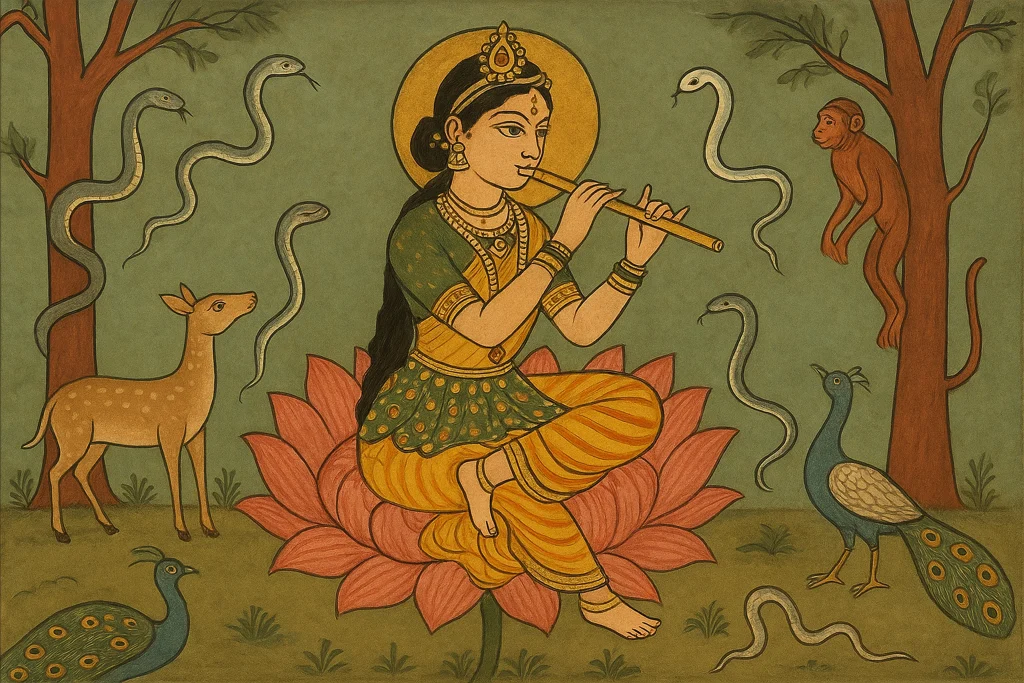
- Pakad of Raga Madhuvanti is – N. S M g M P; M g S R S ;
- Pakad of Raga Yaman is – N R G ; ,N R M G ; M P ; M D P N D P M R G R ; N R S;
Now if we start Raga Madhuvanti, we can use this Pakad , and also can apply the ornamentations of these swaras with gamak, meed and murki. We also can make more Phrases , and can change the sequence of the phrases ,those can beautify Ragas mood.
6) Chalan
With Pakad and swara phrases we can conceptualise raga chalan. We follow those patterns to shape Alaap and Vistar also.
Chalan Of Some Different Ragas
- Raga Bilawal – S R G R ; G P , N D N S’ ; S’ N D P ; D n D P , M G M R S ; N. D. N. R S ; G P M G , M R S
- Raga Yaman- N R G ; R G ; N R M G ,R G R S ; N R G, N R S ; M R G M P ; M D P ; M D N ; M N D, M D N ; D P ; M P ,G M R G ,N R G M P ; M P G M P ; R M G ; M R G , M D N ; D N S’ ; S’ N R’ S; N D P ; M G ; M R G R ; N R S
- Raga Bhairav – S r G m R ; S r S G r, d. , S d. P. ; N. d. N. S; R G m P m ; G m r G, r S; G m d , P , m P ; G m N d P, m P G m r G, m P m r S
- Raga Bhairavi – r g r g S; g m P ; P d P ; d P g m ; P m g m r r S ; ,d S ; S g m P ; P d P ; m M m ; g r S ; S g r m g ; S g P m g S r S ; ,n r ,n ,d ,n ,d ,P ,m g m g R S;
- Raga Khamaj – S G m P, G m G R S; N. S G m P ; G m P D m G P; m G R S ; n. D. P. D. N. S ; m G P ; G m P D n D, m P D m G, m G R
- Raga Madhuvanti – N S g M ; M g R S ; N D P ; P D P ; M g ; M g R S; g M P N S’ ; N S’ D D P ; D P M g M g ; M g R S ; R ,N S
7) Mood and time of the raga
Each raga has a specific time to be sung, and that time or season creates a mood that motivates the structure of the Alaap of that particular Raga.
Below are some examples of well-known raga times:
Time affects the mood of Raga
| Raga | Time |
|---|---|
| Yaman | 1st Prahar of the Night (6PM to 9PM) |
| Bhairav | Morning Sandhi Prakash (4AM to 7 PM) |
| Kafi | 2nd Prahar of the Night (9PM to 12AM) |
| Todi | 2nd Prahar of the Day (9AM to 12PM) |
| Khamaj | 2nd Prahar of the Night (9PM to 12AM) |
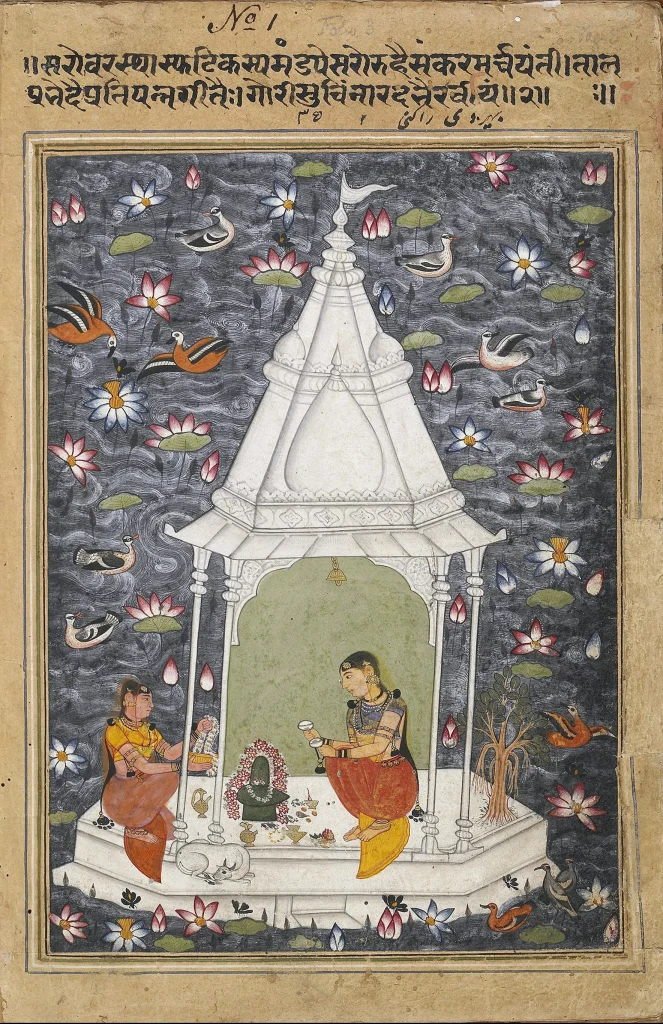
Picture of Bhairavi Ragini, an album painting. Amber, Rajasthan, India.
How to Make Raga Phrases?
Raga phrases are short melodic motifs or patterns that define the character of a raga in Indian classical music. These phrases make the essence and identity of a raga through specific note sequences, ornamentation, and movement with ascending – Arohana and descending – Avarohana. Beginners should start with the ornamentation of the raga with the decoration of Gamak, Meed, Murki, etc.
Every musical note is sung aesthetically. Students should write the short swara combinations and should practice singing them in front of their teacher so that the teacher can correct them. Each swara should be sung as a long melodic note and a short melodious note. The phrases should be aesthetically pleasing.
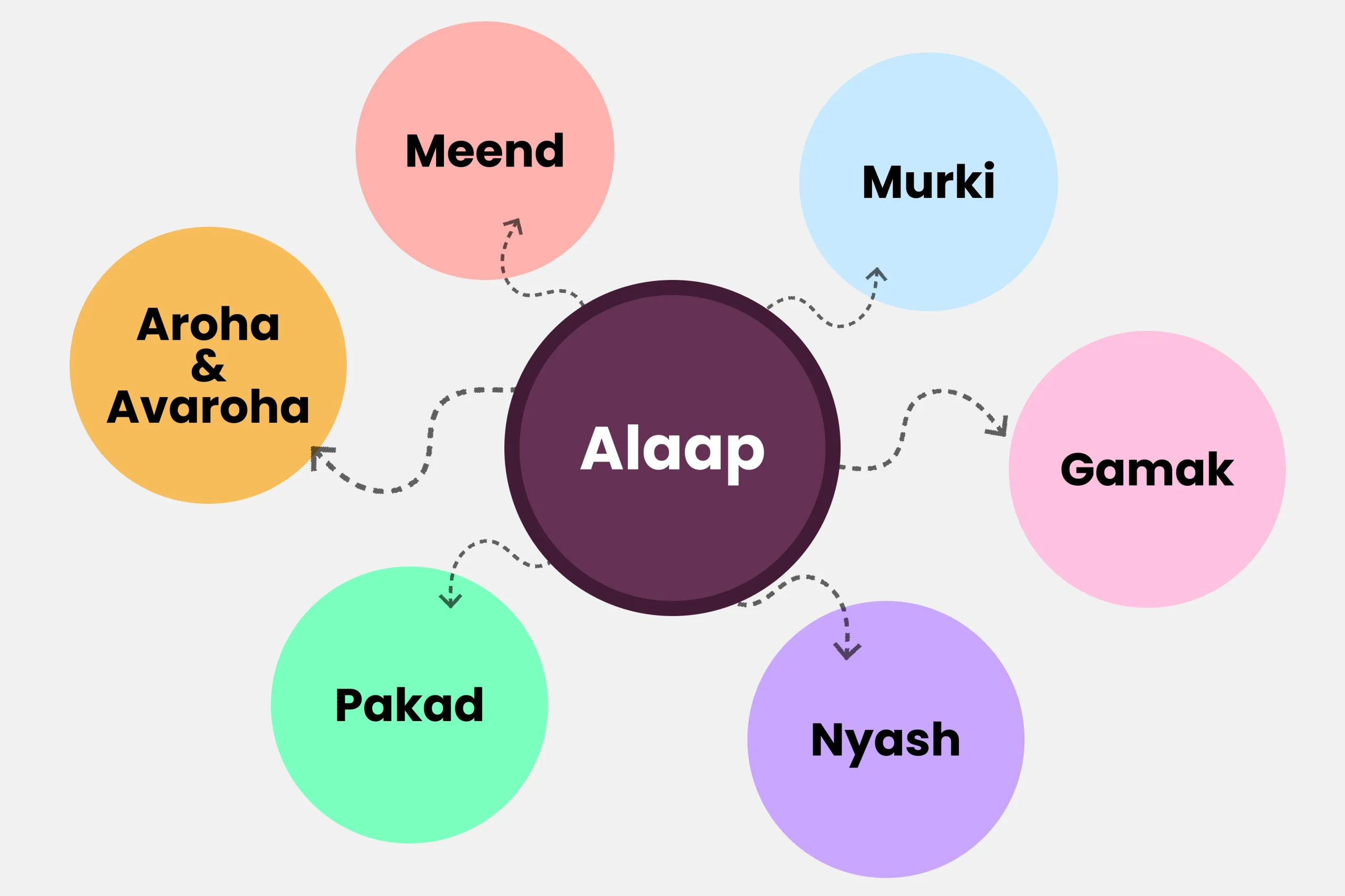
Understanding the Differences Between Alaap and Vistar
| Alaap | Vistar | |
|---|---|---|
| Definition | Alaap is the unmetered, slow, and improvised introduction of a raga. | Vistar means “expansion” — it refers to the elaboration of the raga with “bol” |
| Purpose | To introduce the raga swara, showing its mood | To expand the raga within the structure of the composition and rhythm. |
| Taal | It is not sung with taal | Sung with Bandish or geet. Then the rhythm plays, but the movement of expansion is indefinite. |
| Structural position | At the beginning of a performance, especially in dhrupad, khayal, or Thumri | After the bandish /composition starts, especially in khayal singing. |
| Bhav/ Rasa | Meditative, melodious | Expressive, more dynamic. Vistar is sung with Bandish’s meaningful lyrics. |
Alaap in Popular Film Music
Like classical music, in popular film music, also an alap is sung before many songs. Many of them are not Raga-based songs. In film songs, especially in Indian cinema, alaap refers to a melodic improvisation or vocal passage, usually performed at the beginning or within a song.
It often showcases the expressive and emotional quality of the raga or melodic scale used in the composition. The alap is usually slow and exploratory. It allows the singer to set the tone and introduce the raga emotionally. Especially in songs inspired by Hindustani or Carnatic classical music. Popular in old Hindi film songs and in South Indian cinema.
Examples:
- Classical or Semi-Classical Based Songs
1) Madhuban Mein Radhika Nache Re
2) Poocho Na Kaise Maine Rain Bitai
- Non-classical Songs
1) Ab To Hai Tumse Har Khushi Apni
2) Dil Deewana bin sajna ke manena
3) Piya Bina Piya Bina
A Beginner’s Guide to Raga Alaap
1) Learn from a Guru: A learner should learn any subject at first from his/her Guru, because only the Guru can introduce a student to all the aspects of Raga. Music is a “Gurmukhi Vidya”. Can a teacher guide a student on Mistakes in phrasing? Raga correctness. Voice modulation and tone.Feedback on your emotional expression
2) Note location – The learner must always have an idea of locating the correct note. Begin on Sa (root note), stay grounded. Introduce the raga notes slowly, one at a time. Use sustained and smooth transitions between notes.
3) Tempo – While Alaap has no strict tempo, it usually progresses in phases with long glides and few notes.
4) Ornamentations – Learners should use Meend (glides), Kan swaras (grace notes), Gamak (oscillation), and Andolan (slow oscillation) to make Alaap.
5) Daily Practice Routine – Learners should practice 10–15 minutes Alaap in 1 raga daily. Always use a tanpura or drone. Record & listen to your own alaap. They should focus on the mood and tonal purity.
6) Voice Modulation – To sing Raga alaap, a learner should make their voice good, melodious, and ornamental. However, the learner should practice Alankars and follow their teacher’s advice.
Final Thoughts
The alap is an integral part of classical music, but to sing it properly, learners need proper training. Listening to music and proper guidance help in learning any musical part correctly. The two main genres of Indian classical music that emerged and refined from the era of Sama Veda, and It is undeniable that the Alaap plays a key role in expressing those genres of music.
But if someone wants to sing alap, they have to learn it well. They have to learn it from a Guru. As alaap is an important part for raga music, there are various other structural parts of raga. There is an opportunity to learn those in Artium Academy.
At Artium Academy, there is an opportunity to learn different parts of music also. At Artium Academy, online Hindustani classical music, online Popular film music, and a wide range of online courses are being offered, preserving the purity of the style. Here, student progress is monitored through one-to-one online music classes. Teaching is done on a world-class online infrastructure.
FAQs on Developing Raga Alaap
Alaap is one of the most important and expressive components of Indian classical music, particularly in both Hindustani and Carnatic traditions. It’s a slow, non-rhythmic exploration of a raga, and it sets the emotional and melodic foundation for the rest of the performance. It introduces the Raga and creates the mood of the Raga.
To create alaap, you must know about the characteristics of the raga, the swaras of the raga, and the mood of the raga. Raga is actually a melodic atmosphere formed by specific tone arrangements and their decoration, which is revealed through Alaap. So as Alaap starts with an idea about raga, similarly, Alaap revives the soul of the raga.
A tanpura plays a fundamental role in Indian classical music. Especially in Raga music practice and performance. The Tanpura provides a constant tonic (Sa) and other swaras – Pa, Ma, or Ni to help the performer stay in tune. It develops shruti sensitivity. The real skill of a talented artist is to be able to create the entire atmosphere of a raga by using the two tones played on the tanpura. It makes a stable pitch framework for the Raga, and while performing, it is possible to build the foundation of the alaap by focusing on the pitch framework.
Alaap helps to warm up our voice, develop control over melodious notes, and a sense of shruti. The learner should practice alaap for 20–30 minutes daily (minimum) and gradually increase the time.
Through the alaap, we should focus on:
1) Swara accuracy, stability, smooth transitions.
2) Breath control on long notes.
3) Smooth resonant sound.
4) Listening, remembering, and muscle memory development.
If you want to sing Alap, you have to learn it from a teacher. And learning Alap online is easy. A guru introduces the student to ragas, shows them the path of alaap, and guides their voice development through ragas, correcting any mistakes. At Artium Academy, students can learn to play the alaap by studying Hindustani and Carnatic Classical Music.
It is very easy to keep a teacher’s focus on each student online. In Artium Academy, we teach students how to sing Alaap beautifully and more effectively.
In Indian classical music, ornamentation refers to the delicate and expressive techniques used to enhance or emotionally color a note or phrase. In alaap, these are done slowly, with intention and sensitivity. The types of Ornamentation are Meed, Vibrato, Murki, Andolanand, and Nyash.

